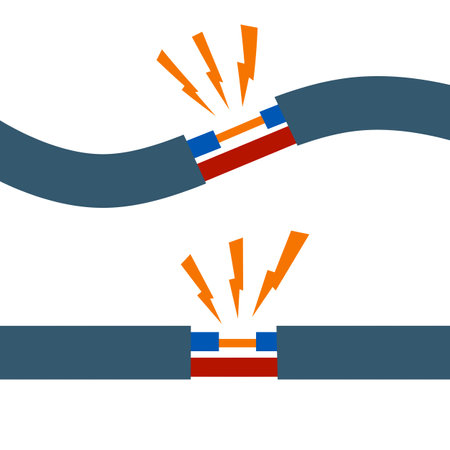Why Tire Condition Matters
When it comes to keeping you and your loved ones safe on the road, the condition of your tires is absolutely essential. Tires aren’t just rubber that keep your car rolling—they’re your vehicle’s only point of contact with the road. Good tires help your car grip the pavement, maintain control during sharp turns, and come to a stop quickly in emergencies. If your tires are worn-out, all these safety features are put at risk. Worn treads reduce traction, especially on wet or slick surfaces, making it much easier to lose control or skid. Braking distances increase, which can be the difference between stopping safely and rear-ending someone. And when it comes to accident prevention, even the best driver can’t make up for tires that just don’t hold up. That’s why keeping an eye on your tire health isn’t just about saving money—it’s about protecting lives every time you get behind the wheel.
2. Common Dangers of Worn-Out Tires
If you’re driving around the U.S. on worn-out tires, you’re taking some serious risks—whether you’re commuting in rainy Seattle, cruising through snowy Denver, or hitting the highways under the blazing Texas sun. Here’s a closer look at what can go wrong:
Blowouts: Sudden and Dangerous
One of the biggest dangers is a tire blowout. Worn tires are more prone to losing air pressure rapidly, which can cause you to lose control of your vehicle in seconds. This is especially dangerous at highway speeds, where even experienced drivers may struggle to steer clear of an accident.
Hydroplaning: Losing Grip When You Need It Most
Worn treads can’t channel water away from your tires effectively, making hydroplaning a real threat during heavy rain—a common occurrence in many parts of the U.S. When this happens, your car glides uncontrollably on a thin layer of water, dramatically increasing the risk of crashes.
Decreased Traction: Trouble in Every Season
Tread depth matters for traction year-round. In winter, bald tires offer little grip on icy or snowy roads, while in summer, they make it harder to stop quickly on hot asphalt. In short, worn-out tires don’t give you the stopping power you need.
Main Risks Associated with Worn-Out Tires
| Risk | Description | Where It’s Common |
|---|---|---|
| Blowouts | Sudden tire failure due to weak sidewalls and low tread | Highways, long road trips |
| Hydroplaning | Losing contact with the road in wet conditions | Rainy regions (e.g., Pacific Northwest) |
| Decreased Traction | Poor grip on roads—longer stopping distances and less control | All seasons, especially snow/ice (Midwest/Northeast) and heat (Southwest) |
Your Safety Depends on Good Tires
In short, ignoring worn-out tires puts everyone on the road at risk—including you and your passengers. Stay safe by recognizing these dangers before they become reality.
![]()
3. Easy Signs of Tire Wear You Shouldn’t Overlook
Knowing how to spot the early warning signs of worn-out tires can make all the difference when it comes to your safety on the road. Here are some practical ways every driver in the U.S. can quickly check their tires:
Check Your Tread Depth
The tread on your tires helps maintain traction, especially in wet conditions. An easy way to check is with the “penny test”: Insert a penny into your tire’s tread with Lincoln’s head upside down and facing you. If you can see all of Lincoln’s head, it’s time for new tires. Many experts recommend replacing tires when tread depth reaches 2/32 of an inch.
Look for Visible Cracking or Bulges
Inspect the sidewalls and tread for any cracks, splits, or bulges. These could be signs of dry rot or internal damage, which often means the tire is no longer safe to use. Don’t ignore these visible warnings—even small cracks can lead to a blowout.
Pay Attention to Strange Noises
If you hear unusual thumping, humming, or squealing noises while driving, don’t just turn up the radio! These sounds can indicate uneven wear, separation inside the tire, or other serious problems that need immediate attention.
Notice Any Vibration While Driving
Feeling your steering wheel vibrate? This might be more than just rough pavement—it often points to unbalanced or worn-out tires. Persistent vibration can also signal alignment issues, so it’s smart to have both your tires and alignment checked by a professional.
Stay proactive by making these quick checks part of your regular routine—catching tire problems early can help keep you and your loved ones safe on American roads.
4. How Weather Makes Tire Wear Even Riskier
If you think worn-out tires are only a problem on dry roads, think again. The variety of weather patterns across the U.S. makes driving on bad tires especially dangerous—no matter where you live or what time of year it is. From scorching summers in Arizona to icy winters in Minnesota, the elements put your tires to the test and can quickly turn minor tire issues into major safety hazards.
Summer Heat: Melting Roads and Blowouts
During hot American summers, road temperatures can skyrocket. Excessive heat causes rubber to soften, making worn tires even more prone to blowouts. Thin tread cant grip sunbaked asphalt well, leading to longer stopping distances and less control during sudden maneuvers.
Winter Storms: Slippery When Wet (or Icy!)
In northern states, winter means snow, ice, and rain—conditions that demand good tread for traction. Bald or worn tires simply cant channel water or slush away effectively, making hydroplaning or skidding far more likely. Even all-season tires struggle when theyre past their prime.
How Different Weather Makes Worn Tires More Dangerous
| Weather Condition | Risk with Worn-Out Tires | What Can Happen? |
|---|---|---|
| Hot Summers | Tread softens; increased risk of blowouts | Tire failure at high speed; loss of control |
| Heavy Rainfall | Poor water displacement; hydroplaning | Skidding; inability to brake in time |
| Snow & Ice | No grip; cant bite into slippery surfaces | Spinning out; getting stuck or sliding off road |
| Sudden Temperature Swings | Tire pressure fluctuations; faster wear | Unexpected tire damage or failure |
The Bottom Line for American Drivers:
No matter if youre dealing with Midwest thunderstorms or Florida downpours, your safety depends on healthy tires. Worn-out treads just cant keep up with the challenges U.S. weather throws your way—and thats a risk not worth taking.
5. When Is It Time to Replace Your Tires?
If you want to stay safe on the road and avoid costly accidents, knowing exactly when to replace your tires is a must. Here in the U.S., tire tread depth is a big deal—not just for safety, but also for staying on the right side of the law. Most states require a minimum tread depth of 2/32 of an inch. If your tires are worn down past that point, it’s time to swap them out, no questions asked.
State Tread Laws: What You Need to Know
Laws vary a bit from state to state, but most follow the federal guideline of 2/32-inch minimum tread depth. For example, California and Texas stick with this standard. However, some states like Colorado and Idaho have stricter rules for winter driving—meaning you might need more tread if you plan on hitting snowy roads. Always check your state’s DMV website for specific requirements if you’re unsure.
The Penny Test: A Quick At-Home Check
You don’t need fancy tools to check your tire tread—just grab a penny! Place Lincoln’s head into the groove of your tire tread. If you can see all of Lincoln’s head, your tread is too low and it’s time for new tires. This simple test works well as a quick monthly check, especially before long trips or harsh weather seasons.
Other Signs It’s Time for New Tires
Besides low tread depth, keep an eye out for visible cracks in the rubber, bulges on the sidewalls, or any vibration while driving that wasn’t there before. These are all warning signs that your tires are no longer safe—even if they technically pass the penny test.
Remember, old or worn-out tires aren’t worth risking your safety—or a ticket. Check regularly and don’t wait until it’s too late!
6. Safe Driving Starts With Healthy Tires
At the end of the day, keeping your tires in good shape isn’t just about ticking off a maintenance box—it’s about keeping you and everyone on the road safe. Worn-out tires can lead to dangerous situations like blowouts, poor traction, or even accidents, especially when roads are wet or slick. By checking your tire tread regularly, watching for cracks or bulges, and making sure your tires are properly inflated, you’re taking some of the simplest yet most effective steps toward safer driving. Don’t forget: investing a little time and money in tire care now can save you from expensive repairs or insurance claims down the road. In short, prioritizing tire health is a smart move for your safety and your wallet.


